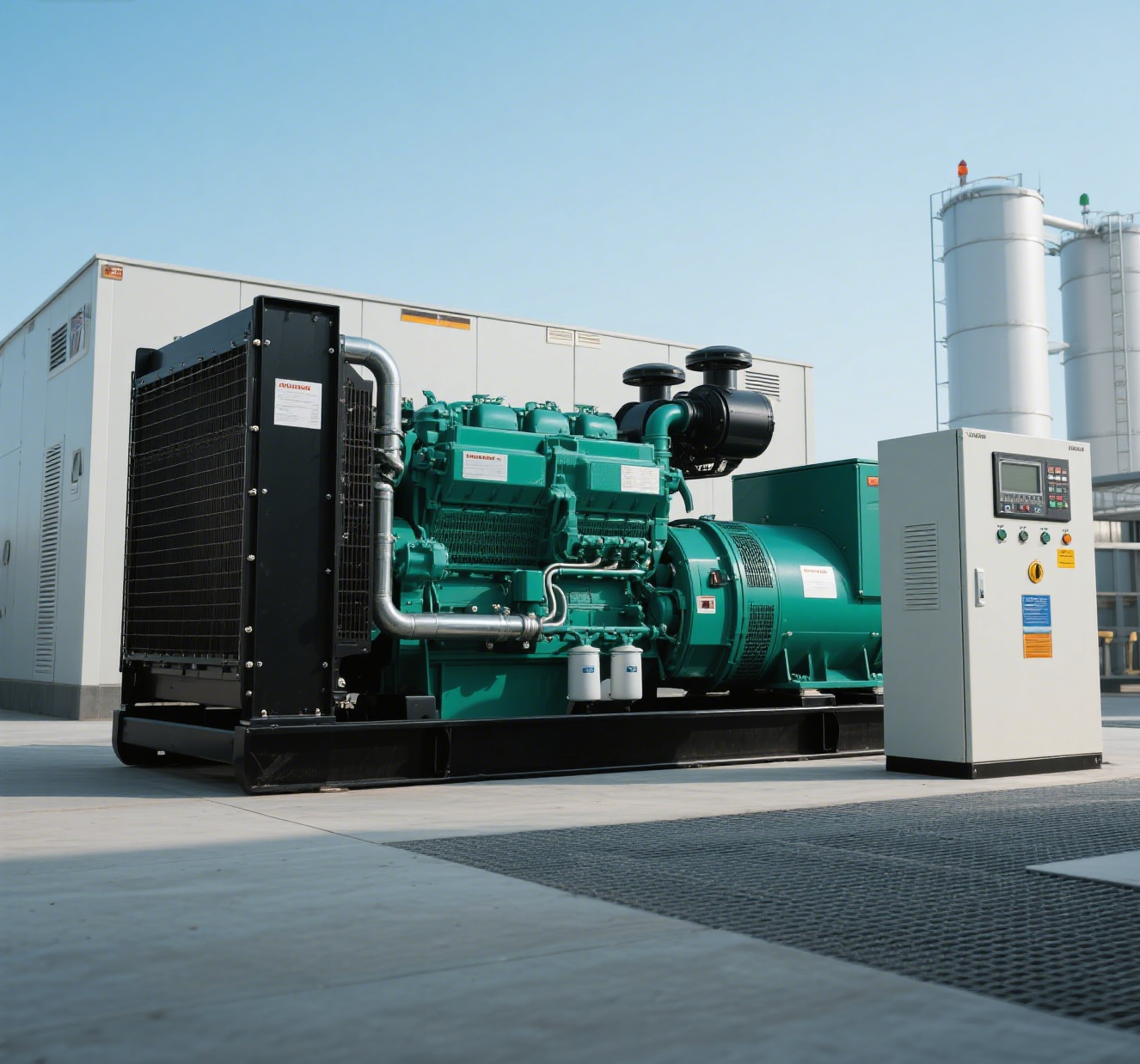Gas Generator Sets Market Growth and Forecast
The gas generator sets market is projected to grow at 6.5% CAGR from 2025 to 2035, expanding from $11.02 billion to $62.23 billion. This 467% increase is driven by rising demand for disaster-resilient power, stricter emissions regulations favoring gas over diesel, and hybrid system deployments to balance renewable intermittency.
North America is currently in the lead with 38% of the market share, though Asia-Pacific will make up 52% of new installations by 2035 due to more than 4,300 planned projects for microgrids. Newcomer biofuels (HVO) and hydrogen-blend-ready systems are delivering emissions savings of 18-23% for traditional gas gensets. To address the energy storage desert, manufacturers are concentrating on 50-500 kW modular AI-driven load prediction compliant units.
Sustainability Challenges in Gas Generator Sets Operations
Emission Regulations Driving Design Overhauls
The EPA's 2025 Tier IV standards require 90% reductions in NOx and particulate matter, pushing manufacturers to adopt advanced combustion systems. Prototypes now achieve 0.07 g/kWh NOx output—a 55% improvement over 2020 models. Retrofitting costs $18,000—$35,000 per MW, making fleet modernization more economical.
Renewable Integration Requirements for Grid Flexibility
Grid operators now demand gas generators to ramp at 25 MW/minute when paired with renewables, necessitating upgraded control software. Hybrid systems—like those combining solar PV and batteries—reduce gas runtime by 40-60% in microgrids while maintaining 99.99% uptime.
Comparative Analysis: CO2 Emissions vs Diesel Alternatives
Modern gas gensets emit 25-35% less CO2 per kWh than diesel, with particulate matter further reduced to 0.01 g/HP-hr. However, methane slip offsets 15-20% of carbon advantages. Biogas-powered units using landfill or agricultural waste can achieve near-zero net emissions.
Hybrid Gas Generator Sets in Renewable Energy Systems
Case Study: Solar+Biogas Hybrid Power Plants
Hybrid plants pairing 2.5MW solar with 1MW biogas achieve 72% annual fuel savings (Frontiers in Energy Research 2025). Predictive switching maintains ±2% voltage regulation, while 94% uptime is possible with thermal storage. Levelized costs drop 40%, meeting EU <250g CO2/kWh mandates.
Advantages in Microgrid Frequency Regulation
Gas generators respond within 20ms to renewable intermittency, outperforming battery-only frequency containment by 15%. In microgrids with >50% renewables, this prevents cascading outages during sudden solar/wind dips.
Fuel Flexibility Metrics (50% H2 Readiness)
Next-gen systems support 30-50% hydrogen blends through:
- Combustion chamber coatings resisting embrittlement
- Adaptive ignition timing for H2's 280m/s flame speed
- NOx suppression keeping emissions <50mg/Nm³
These systems achieve 98% combustion efficiency at 35% hydrogen, supporting 2030 decarbonization targets.
Alternative Fuels Revolutionizing Gas Generator Sets
Biogas Upgrading Technologies for Clean Combustion
Advanced filtration achieves 85% methane purity, cutting CO2 emissions by 65% versus diesel. Landfill biogas with SCR systems reduces particulate matter by 80%, closing the efficiency gap with traditional turbines.
Hydrogen-Blend Pilot Projects (2026 Roadmap)
Pilots testing 15-25% H2 blends in 2MW generators show NOx below 0.1 lb/MWh (2024 Renewable Engine Study). Material embrittlement remains a challenge, increasing maintenance needs during transition.
HVO Adoption Rates in Backup Power Systems
HVO now powers 22% of emergency generators, improving cold-start reliability by 40% and reducing lifecycle carbon intensity by 90%. Retrofitting costs have dropped 35% since 2021, making HVO viable for most fleets.
Smart Technologies Reshaping Gas Generator Sets
AI-Driven Predictive Maintenance Systems
Machine learning predicts failures 150-300 hours in advance, cutting maintenance costs by 32% (2024 generator maintenance study). Models adjust for fuel quality and temperature impacts.
IoT-Enabled Fuel Efficiency Optimization
Sensors adjust output in 0.5-second intervals, saving 18% fuel by synchronizing with renewable fluctuations.
Blockchain for Emissions Tracking Compliance
Decentralized ledgers automate emissions reporting with 94% accuracy, triggering maintenance alerts for regulatory breaches.
Future Strategies for Sustainable Gas Generator Sets
Multi-Fuel Engine Development Timelines
Hydrogen-ready gensets are expected by 2027, with 30% H2 blends in testing by 2025. Dual-fuel systems (biogas, LNG, HVO) already show 50% emissions reductions in pilots.
Carbon Capture Partnerships in Power Generation
Modular CCS units paired with 1MW gas gensets cut 60-70% of CO2 emissions. A 2028 commercialization target is backed by $120M in joint R&D funding, aligning with EPA >80% cuts by 2032.
FAQ
What is driving the growth of the gas generator sets market?
The growth is driven by the rising demand for disaster-resilient power, stricter emissions regulations that favor gas over diesel, and hybrid system deployments to balance renewable energy intermittency.
How significant is the role of renewable integrations in the gas generator market?
Renewable integrations are significant as they require gas generators to support rapid ramp-up rates and decrease their runtime by 40-60% in microgrids, ensuring high uptime.
What are the sustainability challenges for gas generator sets?
Sustainability challenges include adhering to emission regulations, integration of renewable energy sources, and balancing CO2 emissions compared to diesel alternatives.
How are alternative fuels impacting gas generator sets?
Alternative fuels like biogas and hydrogen blends are revolutionizing gas generator sets by improving emissions standards and operational efficiency with reduced carbon footprints.
Table of Contents
- Gas Generator Sets Market Growth and Forecast
- Sustainability Challenges in Gas Generator Sets Operations
- Hybrid Gas Generator Sets in Renewable Energy Systems
- Alternative Fuels Revolutionizing Gas Generator Sets
- Smart Technologies Reshaping Gas Generator Sets
- Future Strategies for Sustainable Gas Generator Sets
- FAQ

